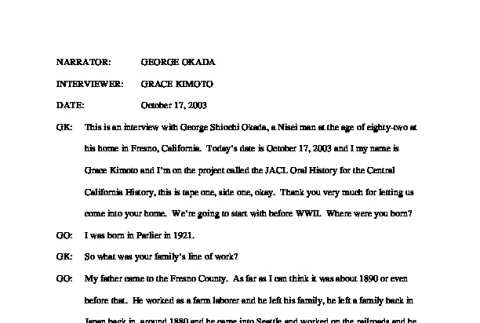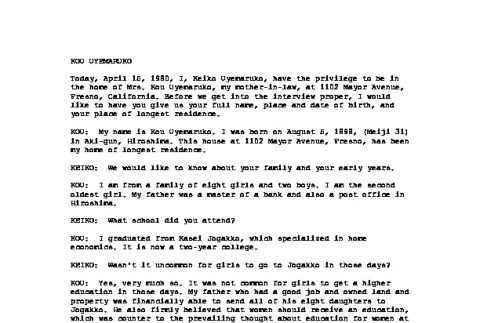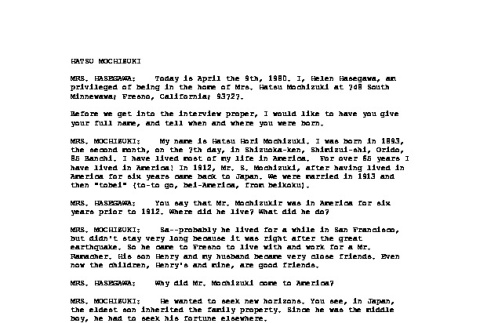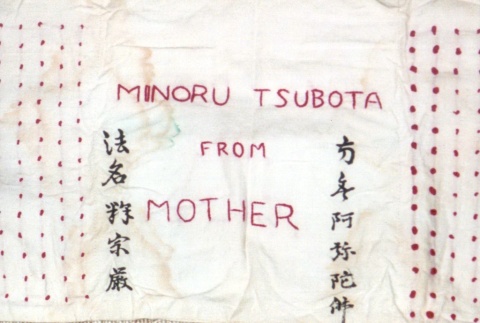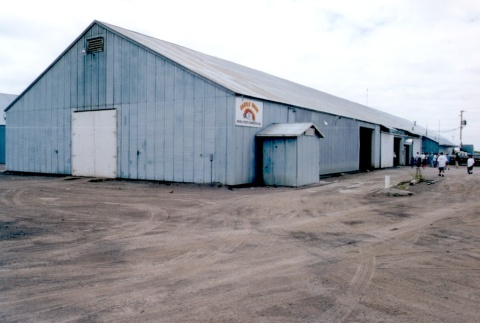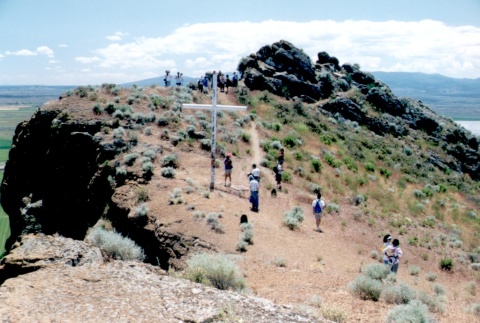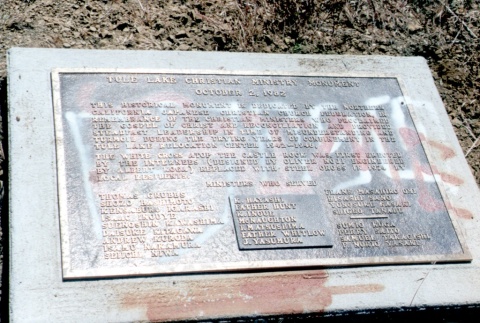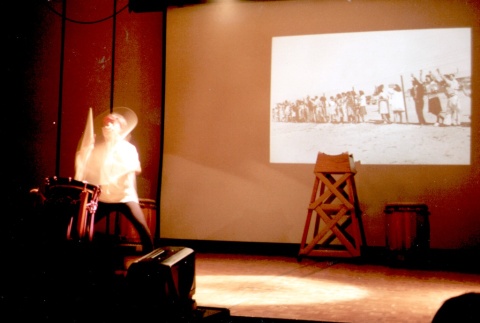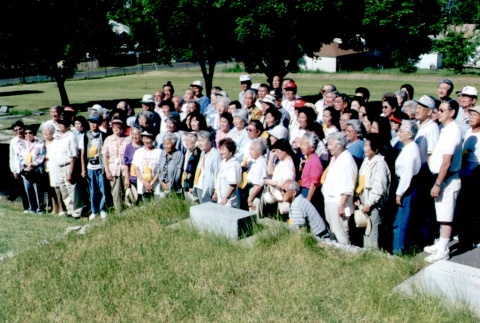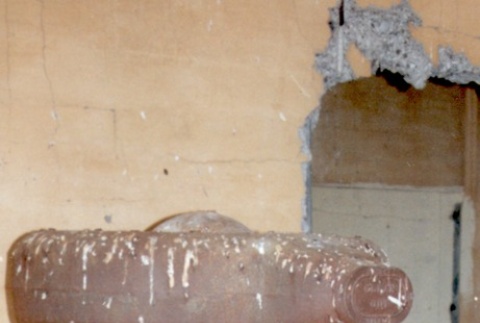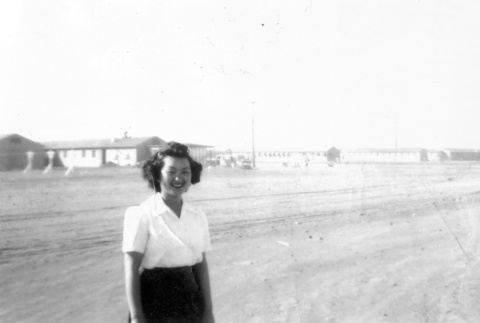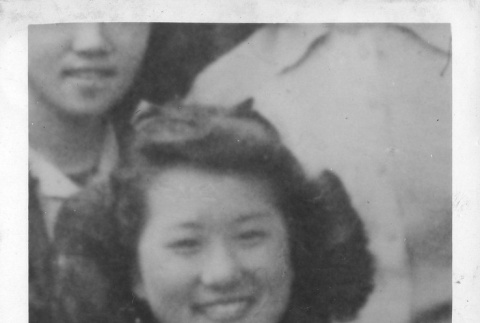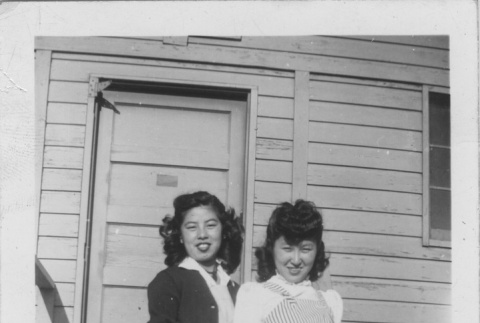2569 items
2569 items

img
Planting potatoes at Tule Lake (ddr-csujad-52-25)
Caption from reverse of image reads, "POTATO PLANTING TIME AT RELOCATION CENTER, Using light tractors Japanese residents of the relocation center at Tulelake, Calif., begin planting potatoes in several hundred acres of fertile soil reclaimed old Tule Lake (correct for name of lake). The residents are planting 835 acres in vegetables." See this object in the …
![Relocation program: [a guidebook for the residents of relocation centers] (ddr-csujad-5-69)](https://ddr.densho.org/media/cache/8c/cd/8ccdb45abd0bba1b59a240eaa64c5ef8.jpg)
doc
Relocation program: [a guidebook for the residents of relocation centers] (ddr-csujad-5-69)
Japanese translation of "Relocation program: a guidebook for the residents of relocation centers." It describes the policies and procedures of the War Relocation Authority Relocation Program. Includes policies and procedures on leave and return to a camp, placement, travel and subsistence, food, lodging, health service, employment and compensation, clothing allowances, community government, education, internal security, consumer …
![Postcard from Fred F. Fujii to Mr. and Mrs. Okine, July 18, 1947 [in Japanese] (ddr-csujad-5-205)](https://ddr.densho.org/media/cache/0e/b0/0eb017a7a47a58258ab9c97e3a3a3fc7.jpg)
doc
Postcard from Fred F. Fujii to Mr. and Mrs. Okine, July 18, 1947 [in Japanese] (ddr-csujad-5-205)
A postcard from Fred F. Fujii, a former incarceree in the Heart Mountain incarceration camp, Wyoming, to Seiichi and Tomeyo Okine. Fred informs that Masao Okazaki has returned from Seabrook Farms, New Jersey on June 29, 1947. Okazaki was probably incarcerated in the Jerome incarceration camp, Arkansas first and later transferred to the Tule Lake incarceration …

doc
George Okada interview (ddr-csujad-6-28)
Oral history interview with George Okada. See this object in the California State Universities Japanese American Digitization project site: SCRC_OKADA_GEORGE

doc
Dr. Frank Nishio interview (ddr-csujad-6-26)
Oral history interview with Dr. Frank Nishio. See this object in the California State Universities Japanese American Digitization project site: SCRC_NISHIO_FRANK

doc
Kou Uyemaruko (ddr-csujad-8-81)
Oral history interview with Kou Uyemaruko [Ko Uemaruko]. Information on the oral history project is found in: csuf_stp_0012A; Glossary in: csuf_stp_0014. See this object in the California State Universities Japanese American Digitization project site: FCPL Uyemaruko, Kou

doc
Hatsu Mochizuki (ddr-csujad-8-92)
Oral history interview with Hatsu Mochizuki. Information on the oral history project is found in: csuf_stp_0012A; Glossary in: csuf_stp_0014. See this object in the California State Universities Japanese American Digitization project site: FCPL Mochizuki, Hatsu
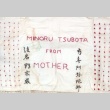
img
Senninbari, "thousand-stitch belt" (ddr-densho-105-8)
Minoru "Min" Tsubota's mother made this senninbari in Tule Lake. It is known as a thousand-stitch belt, and was created to protect a soldier going into battle. Each of the thousand knots was sewn by a different woman. On the belt is stitched Min's Buddhist name, the traditional Buddhist chant of "Namu Amida Butsu," and a …

img
Camp warehouse (ddr-densho-11-5)
This building, now a potato-processing plant, was formerly a produce-processing and storage facility at the Tule Lake concentration camp.
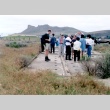
img
Tule Lake pilgrimage (ddr-densho-11-4)
Pilgrimage attendees examine an old latrine foundation from Block 73. The holes were for toilets, which were situated at each end of the facility. Group showers were in the middle.

img
Tule Lake pilgrimage (ddr-densho-11-1)
Jimi Yamaichi (right) pointing out something to Stan Shikuma at the former site of the Tule Lake concentration camp.

img
Cross erected by camp inmates (ddr-densho-11-7)
This cross, erected by inmates at the Tule Lake concentration camp, sits on top of a formation called Castle Rock. It is being approached by pilgrimage attendees.

img
Memorial honoring deceased camp inmates (ddr-densho-11-12)
This memorial honors Japanese Americans who died while incarcerated at the Tule Lake concentration camp. The marker is located at the Linkville cemetery in Klamath Falls, Oregon.
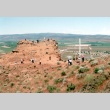
img
Pilgrimage attendees on Castle Rock (ddr-densho-11-6)
Tule Lake inmates erected this cross on top of a formation called Castle Rock. The area below the cross is the former site of the concentration camp.

img
Tule Lake pilgrimage (ddr-densho-11-2)
Pilgrimage attendees barracks located on the property of a local farmer. Castle Rock is in the background.

img
Memorial plaque (ddr-densho-11-11)
This plaque was placed at the base of the cross on Castle Rock on October 2, 1982. The plaque honors Christian ministers who served the inmates at the Tule Lake concentration camp.
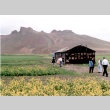
img
Tule Lake pilgrimage (ddr-densho-11-3)
Pilgrimage attendees barracks located on the property of a local farmer. Castle Rock is in the background.

img
Evening program, Tule Lake pilgrimage (ddr-densho-11-9)
At the Tule Lake pilgrimage, an evening program was held to honor the inmates and remember the incarceration experience. The person shown here is playing a shime taiko drum while slides taken during the incarceration are being shown in the background.
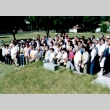
img
Former camp inmates, Tule Lake pilgrimage (ddr-densho-11-10)
These Japanese Americans were incarcerated at Tule Lake, California. They are at the Linkville cemetery for a service honoring Japanese Americans who died at the camp during World War II. There is a marker at the Linkville cemetery honoring Japanese Americans who died at the Tule Lake concentration camp.

img
Stockade wood-burning stove (ddr-densho-11-8)
In 1943, Tule Lake concentration camp became a segregation center. A stockade was built to detain those who were considered security risks by the WRA. This wood-burning stove was used to help heat the stockade.
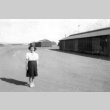
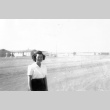
img
Nisei standing in concentration camp firebreak (ddr-densho-111-1)
Elaine Ishikawa Hayes was employed by Tule Lake's recreation department. She is pictured here standing in the firebreak near the recreation department barracks.
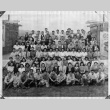
img
Recreation department staff (ddr-densho-111-3)
Staff of Tule Lake concentration camp's recreation department. They are sitting on a stage platform which was built in a firebreak, and used for various performances. Second row from front, ninth from left is Harry Mayeda, the Recreation Department Director. Elaine Ishikawa Hayes is in the third row, sixth from left.
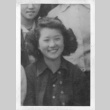
img
Nisei girl in class photo (ddr-densho-111-7)
Elaine Ishikawa Hayes' sister Jean in a class photo.


![Relocation program: [a guidebook for the residents of relocation centers] (ddr-csujad-5-69)](https://ddr.densho.org/media/cache/60/8b/608b25996cc6836ac239a8e233522f56.jpg)
![Postcard from Fred F. Fujii to Mr. and Mrs. Okine, July 18, 1947 [in Japanese] (ddr-csujad-5-205)](https://ddr.densho.org/media/cache/f0/6e/f06e30f34b28e2c6f193051ade5e2d4a.jpg)
